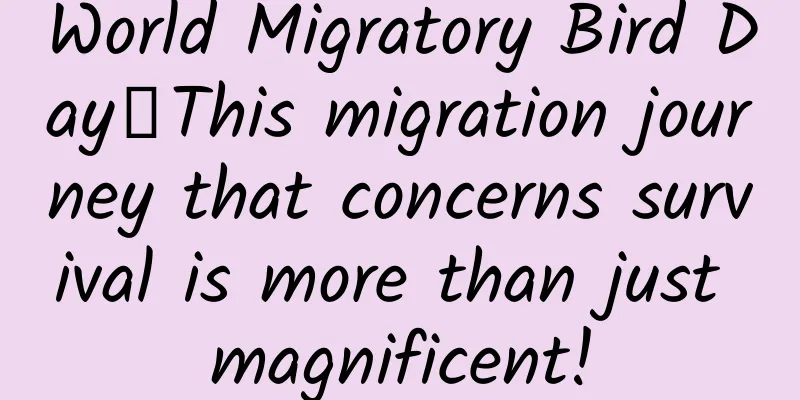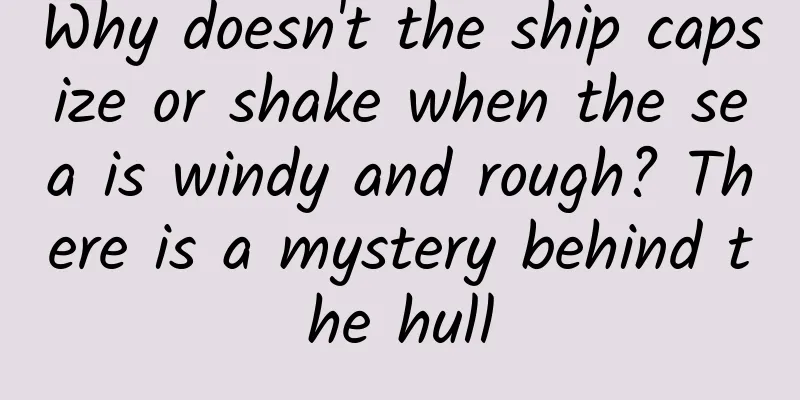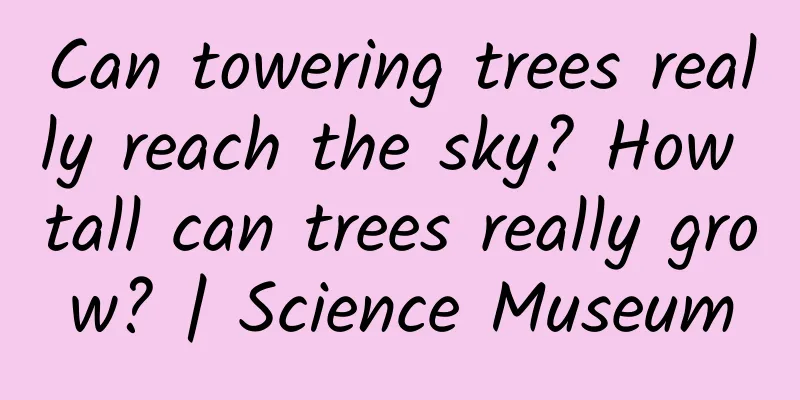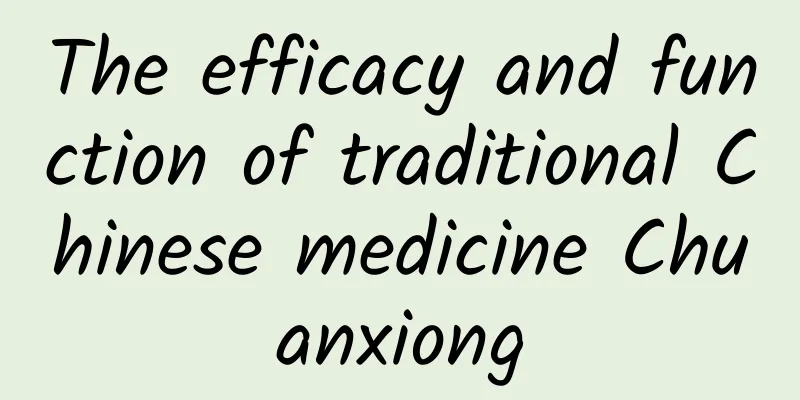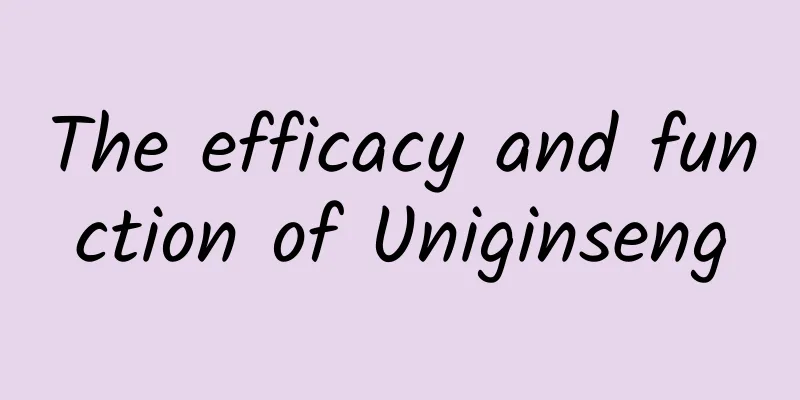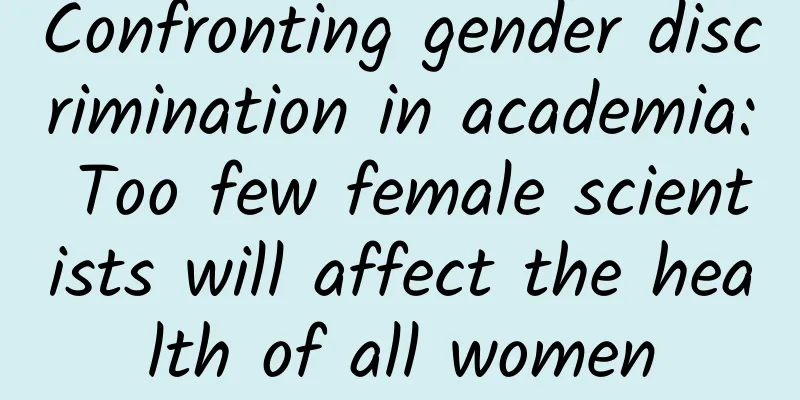The 110th anniversary of the birth of Wu Jianxiong, the "Oriental Marie Curie" | In addition to missing the Nobel Prize, there is something you don't know about Wu Jianxiong
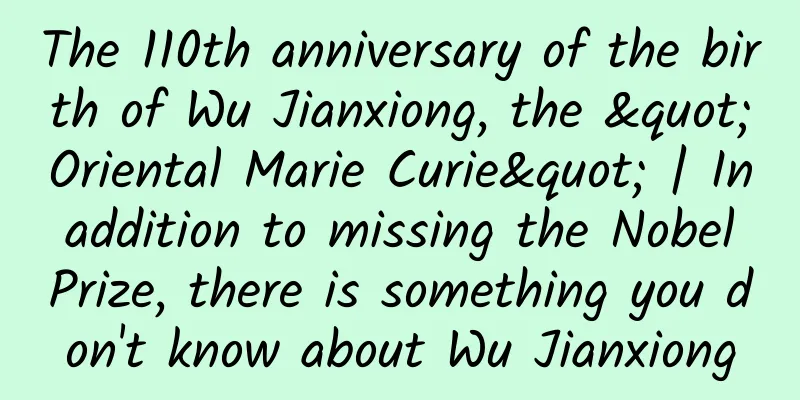
|
On September 24, a commemorative event for the 110th anniversary of the birth of Chinese-American physicist Chien-Shiung Wu was held at the National Postal Service Conference Center, co-organized by the Physics Societies of China and the United States and hosted by the Nanjing University American Alumni Association. Ambassador Qin Gang was invited to deliver a speech at the event. Public servant Chen Futao attended the event and read out Ambassador Qin's speech. Ambassador Qin reviewed in his speech how Chien-Shiung Wu traveled thousands of miles from China to the United States to study physics and devote her life to science, and highly praised her scientific spirit of persistent pursuit of truth. She faced challenges head-on, did not rely on books but only on facts, conducted rigorous experiments, sought accurate evidence, and had independent thinking. Her noble character inspired many female scientists in later generations to devote themselves to the endless exploration of unknown frontiers. She proved with her actual actions what the Chinese often say: practice is the only criterion for testing truth. Ambassador Qin pointed out that as China deepens reform and continues to open up to the outside world, the scientific literacy of Chinese citizens continues to improve, more and more young people love science, and more and more outstanding girls are studying STEM. Ambassador Qin expressed the hope that middle school students, teachers and scholars who teach science and physics in primary and secondary schools in both countries can take Mr. Wu as an example, have lofty ambitions, and contribute wisdom to Sino-US scientific and technological exchanges and cooperation. He hoped that China and the United States would work together to build more scientific exchange platforms and dialogue mechanisms to promote more people to understand physics, love science, and devote themselves to scientific undertakings, and make positive contributions to the progress of China, the United States, and even mankind. Wu Jianxiong was born in Taicang, Suzhou, Jiangsu Province. She is a Chinese American who has made world-class contributions to the research of β decay. She is one of the world's most outstanding experimental physicists and is known as the "Oriental Marie Curie", the "Queen of Nuclear Physics" and the "First Lady of Physics" . To commemorate the 110th anniversary of Wu Jianxiong's birth, Wu Jianxiong's granddaughter Jada Yuan wrote a memoir. Jada Yuan is the only granddaughter of Wu Jianxiong and Yuan Jialiu (grandson of Yuan Shikai). She was born in the United States and graduated from Yale University. She is currently a writer for the style section of The Washington Post, focusing on national politics. This article was originally published in The Washington Post on December 13, 2021, and was translated by Hua Xinmin. Figure 1 (Drawn by Jing Li) Someone pulled a rope, and a yellow curtain fell down, revealing a statue of my grandmother, three stories tall. It was May 2012, and a sculptor had erected a statue of Chien-Shiung Wu in a town not far north of Shanghai. She was a world-renowned nuclear physicist who had come from China to study in the United States in 1936 and, in many ways, never looked back. She had overturned laws that were once considered fundamental to nature, raised my father in Manhattan, and taught me how to use chopsticks when I was a child. In real life, she was probably just under five feet tall, and she got smaller as she aged. The statue today shows her as she would have looked in her youth, sitting on a pedestal and wearing the kind of academic robes I had only seen in photos of her receiving sixteen honorary doctorates of science, one of which was from Princeton, the first such degree ever given to a woman. It took me a moment to realize it was her. It was large and green—the same mint green hue as the Statue of Liberty. My parents and I flew to Shanghai, where my grandmother was born a hundred years ago in 1912, and then drove an hour north to Liuhe, a fishing village where the Yangtze River meets the Yellow Sea, where she grew up. Figure 2 (Drawn by Jing Li) We were still jet-lagged and dazed as we attended the local government's centennial celebrations for her. I hadn't expected the police motorcycle squads clearing the way, the banners with her name across the streets, or the raucous banquets with local officials every night, with streams of Moutai, a clear fermented sorghum liquor that tasted like sweet turpentine. At such events, a gregarious man like my cousin Wu Su would go around the tables and toast everyone. Then you had to do what he did, going around the tables, toasting one glass after another, secretly pouring water into every other glass so you didn't pass out halfway through. Each visit to China was always a bewildering array of encounters with relatives I never knew existed and a cacophony of familiar language that my American-born father and I had listened to our entire lives but had little understanding of. We were simply at their mercy. On the morning of the statue’s unveiling, our relatives led my father, Vincent Yuan (Wu’s only child), my mother, Lucy Lyon, and me (the only grandchild) to a sea of folding chairs, each covered in red and yellow fabric. There were many speeches in untranslated Chinese, and somewhere in the middle of them I heard my father’s name, and then mine. My cousin quickly motioned for us to stand and wave, and there was applause. When my mother, who is Jewish by race but not religion, and has blonde hair and blue eyes, was introduced and stood up, thousands of people uttered an “ooh”. We had visited China before to honor my grandmother: There’s a memorial in Nanjing, where she did her undergraduate work. Another bronze statue of her stands in Shanghai. On this centennial trip, we attended the opening of the Chien-Shiung Wu Museum, which displays her academic papers and the slit cheongsams she wore under her white lab coat. In her hometown, we visited classrooms at the school her father founded, primarily so his daughters could get an education. There, the children sang songs about Chien-Shiung Wu. Figure 3 Wu Jianxiong in cheongsam | Source: Suzhou Association for Science and Technology Hero worship in China is impressive, and it’s a surreal experience when your grandmother is the object of that worship. In New York, she moved unnoticed between her lab at Columbia University and the nearby rent-stabilized faculty apartments where she lived with my grandfather, a particle physicist, and my father, who would become a nuclear physicist as well. This kind of saintly worship can easily lead to a loss of awareness of real personality. I still have a fragmentary memory of my grandmother. The research that made her famous changed scientists' understanding of the universe. It inspired countless girls and women who still contact me today. Yet the images that come back to me are of my childhood: dancing around her in the polka-dot party dress she gave me, or rushing downstairs with her to see the Christmas carols on Claremont Avenue. Today I am approaching the age when she made her great discovery. I have lived half my life knowing her as a grandchild. Like many children from immigrant families—or from scientists' families, or from families that have lived through war and destruction—I didn't realize how little I knew about my grandmother's life until she died and I had no chance to ask her questions. Putting the memories together. Our family story has been repeated so many times in official accounts and biographies that it's unclear which version is true. The past is a closed chapter. The first generation struggles to distance itself from the old way of life, the language, the food. The second generation, like me, looks back, eager to know more about what it was like when it all began. Figure 4 United States Postal Service My grandmother was like a rock star in China. Then, in early 2021, she became something of a rock star in America, too, when the U.S. Postal Service issued a forever stamp in her honor. (You can also buy a T-shirt featuring her and other “women in STEM.” More recently, she and her stamp became a clue for “famous Asian Americans” on the TV quiz show “Jeopardy!” for $800.) My grandmother’s stamp brings the total number of Asian-American women who have appeared on stamps to two, joining Joyce Chen, the chef who popularized moo shu pork. The portrait of my grandmother on the stamp looks just like the woman I remember: intelligent, with deep eyes and an elaborate high bun - an achievement of physics in itself. She also has a sly half-smile on her face that always makes me wonder what she's thinking. To some extent, we are all theoretically interpreting the lives of those close to us; once they are gone, we deal with the documents and notes they left behind. I'm not an expert in nuclear physics, but here's my understanding: My grandmother performed an experiment in 1956 that proved a theory that shattered our understanding of the physical world . She took on a challenge that no one in her field was willing to take on, and she proved that "parity is not conserved," meaning that the laws of nature are not perfectly symmetrical. A natural phenomenon and its mirror image are not always identical. The universe sometimes distinguishes between left and right. Janna Levin, an astrophysicist at Barnard College, told me why there was more matter than antimatter after the Big Bang—why was there matter in the universe instead of nothing? Why didn’t it annihilate into nothingness? Ultimately, why did the universe exist as we know it today? The asymmetry my grandmother discovered may have fundamentally answered these questions. Figure 5 Nuclear physicist Chien-Shiung Wu at Columbia University in New York | Rare Book and Manuscript Collection, University Archives, Columbia University Library What was my grandmother like? My sense of her came from a number of written sources, some of which are as reliable as peer-reviewed scientific papers. There’s a biography originally written in Chinese by Chiang Tsai-chien, and the countless articles that pop up every time a woman in science is honored. And the most succinct account is given in a 2019 children’s book, The Queen of Physics, which turned out to be particularly useful in helping me learn more about my grandmother. What is the most important thing about her career? — The answer is this: Grandma should have won a Nobel Prize . I started hearing this even before I understood her work (not that I was capable of truly understanding it). She was known around the world as the "Chinese Marie Curie" and the "First Lady of Physics." At Columbia University, where she taught for decades, disgruntled students would call her "Mrs. Wu"—or "Ms. Long"—for their perfection in their work and long hours in the lab. She preferred to be called Professor Wu or Dr. Wu. I called her Grandma, though a more Chinese-influenced child would call her Grandma. Although she never won a Nobel Prize, her name is often mentioned in the same breath with those physics giants who did, such as Curie, Einstein, Fermi and Feynman. Figure 6 A photo of Wu Jianxiong and her uncle Wu Zhuozhi who later sponsored her to study abroad (family photo) When Wu Jianxiong was 11, her parents' school could no longer teach her, so she left home to study. She was lucky - she was the middle girl of two brothers, and her parents were politically progressive and true revolutionaries who advocated for women's rights and girls' right to education. She had to travel fifty miles over rough country roads to attend a selective free women's normal school in Suzhou. Yet she secretly studied physics and math books borrowed from classmates at night. Why physics? She never told me, but it was the 1920s, and there was a wave of exciting discoveries in Europe and the United States, driven by Einstein's theory of relativity. It was understandable to want to be part of it, just as a young Patti Smith wanted to be in the East Village in the late 1960s. Figure 7 Wu Jianxiong (fifth from left, in black) takes a photo with her family. Her father Wu Zhongyi is on her left, and her mother Fan Fuhua is on the far left of the photo (family photo) In 1936, when she was 24, she boarded an ocean liner and began a month-long journey across the Pacific Ocean to the United States. Her uncle paid for her trip. She had to go abroad, as there was no place in China at the time where she could study for a doctorate in atomic physics. The threat of Japanese invasion of China was imminent, and those who left their homeland knew what they were running from. Her first battle, a year after she arrived, took place in Shanghai, 27 miles south of her hometown. Then came the Nanjing Massacre, in which the Japanese raped or massacred hundreds of thousands of civilians, in the city where she had recently completed her undergraduate studies and where she had led a protest at the residence of Chinese leader Chiang Kai-shek, demanding that he do more to stop the war. She did not foresee that the war would later spread into World War II, nor did she foresee that her brother and uncle would be tortured to death during the Cultural Revolution. She thought she would be able to return to China in a few years. When she said goodbye to her parents on the ship, it was also the last time she saw them. When the stamp was released, a reporter contacted my father and asked him about his mother. My father copied me his response, and it was the first time he was more blunt with me than he had ever been before. Could he talk about how she was as a mother? The father replied: She worked long hours in the lab and came home late at night. "She had to take care of me and do her job at the same time." She checked whether he had done his homework, but she didn't pay much attention to it. What happy things did they have together? “As for fun, we didn’t have much in common,” her father wrote. “Work was her life and her fun.” She preferred to be with him when she traveled rather than in her daily life. Figure 8 (drawn by Jing Li) My father learned some things about his own childhood from reading what people wrote about my mother: “Students in her lab bought us two circus tickets so she could leave the lab for two hours,” he said. “But she came back in less than half an hour, laughing and saying she didn’t have to go to the circus because the babysitter had agreed to take me.” I come from a family of physicists and grew up in Los Alamos, New Mexico, a town built in secrecy. Many of the adults around me had security clearances, and we kids learned not to ask about their jobs. They led secretive careers that were off-limits to me. I did well in science and math, but I was more into storytelling. So I became a journalist, writing profiles of famous people and interrogating them about their lives. Somehow, I never tried to peel off the veneer of my own family's reputation. Even now it’s hard, because if I dig too hard, I have to confront the idea that Chien-Shiung Wu, in her many achievements, did not balance her work and family life, and that the consequences of those choices have affected my father and, in turn, me in ways that I have only begun to understand after years of therapy. This article took several months to write, during which time I had hysterectomy and froze my eggs—for fear that, at 43 and single, I would end her family line. My grandmother had intended to pursue a doctorate at the University of Michigan when she stepped off the ocean liner, but changed her mind after visiting UC Berkeley, where she was shocked to learn that women were not allowed to enter the front door of the student union at Michigan, and that her guide at Berkeley was another Chinese physics graduate student, Yuan Jialiu, known as Luke. Luke was my grandfather, but here’s another, less romantic—or perhaps more romantic—love story for physicists: Berkeley happened to have the world’s first cyclotron, a warehouse-sized device that accelerates charged particles along a spiral path and shoots them into smaller particles. As soon as my grandmother saw it, she knew she had to stay here. She had intended to return home, but the Japanese invasion of China in 1937 cut off all hope. I believe that this mixture of wandering and desperation led her to throw herself into her laboratory work, often staying up until 4 a.m. She took every exam in fear that if she failed she would be homeless. Every time she passed an exam—which she always did—she would celebrate at a Chinese restaurant. At Berkeley, she began her life’s work studying beta decay , one of the three main forms of radioactive decay (alpha, beta, gamma), a phenomenon of weak interactions that is the fundamental force that makes the sun shine. As the world around her was crumbling, she focused on unstable atoms, which, when they break apart, spontaneously emit small fragments and become stable again, releasing energy and turning into other elements in the process. Figure 9 (drawn by Jing Li) During her difficult rise, one constant was that she was a rare, often the only woman in any room she walked into, and she was Chinese . In a 1941 article about her research on nuclear fission, the Oakland Tribune called her "a petite Chinese girl who looked like an actress, an artist or a rich girl pursuing Western culture." Those articles about her at the time almost all praised her beauty in a slightly erotic Orientalist tone, as if expressing surprise that she was also what J. Robert Oppenheimer called an "authority" in the study of beta decay. My father and I had to reconstruct this episode in her life from a few written accounts, particularly the 1993 book Nobel Prize-Winning Women in Science by Sharon Bertsch McGrayne, who interviewed my grandmother and many of her contemporaries before they died. Berkeley did not offer my grandmother a permanent position. It was a crushing blow, one that McGarry attributes to sexism and the rise of anti-Asian sentiment during the war, especially on the West Coast. The Chinese Exclusion Act of 1882 was tightened by a stricter immigration law in 1924. Japanese internment camps were established soon after. That year, there were no female physics professors at any of the top 20 research universities in the country. (Even now, fewer women earn degrees in physics than in any other scientific field, according to the National Science Foundation.) Unable to secure a position at Berkeley that paid a modest salary, my grandfather landed a good position at Caltech and later a job in New Jersey developing radar for the U.S. Department of Defense. They married and moved east, and my grandmother followed my grandfather’s career for a while. She taught briefly at Smith College, where she enjoyed mentoring young women, but her teaching duties left her with little time for research. A year later, in 1943, she signed on as one of the first female physics fellows at Princeton University. Figure 10 Wu Jianxiong and Yuan Jialiu got married on May 30, 1942, and took a photo at the Millikan home in Pasadena, California on the same day. The second and first on the right are Greta and Robert Milikan (family photo) A year later, she was drawn to a secret wartime research project at Columbia University. Two physicists from Columbia's war research department spent a day questioning her, but they never revealed what she would be working on. After the questioning, they asked her to guess. She responded: "Sorry, if you don't want me to know what you are doing, you should have wiped the blackboard clean." According to McGarry, they hired her on the spot. Imagine a moment in the history of nuclear physics when a series of major discoveries were being made at a frantic pace and scientists were crowding into standing-room-only lecture halls or climbing pillars to read equations on blackboards. My grandmother was at the center of it. Until the 1950s, the symmetries of the universe, including the left-right symmetry known as parity conservation, were considered irrefutable facts. Parity states that the universe is not biased towards left or right, and the laws of physics apply equally to everything and its mirror image. This has been shown to be true for macroscopic objects such as planets and baseballs. But at the level of the nucleus, it's not quite like that. Scientists used high-energy accelerators to blast particles into a bunch of smaller particles, and something was wrong. Either the experiment was wrong, or 30 years of physics was wrong. Figure 11 Jing Li based on a photograph from the University Archives, Rare Book and Manuscript Collection, Columbia University Library In the spring of 1956, one of my grandmother’s colleagues at Columbia University, Tsung-Dao Lee, told her that he and Chen-Ning Yang of Princeton University were writing a controversial paper demonstrating that parity might not be conserved in the weak interaction, one of the four fundamental forces of the universe. (Gravity was another; their theory was as unacceptable as saying that gravity only worked sometimes.) My grandmother, then 44, had already developed a reputation as a rigorous and meticulous experimentalist. Proving in the lab whether the ideas of theorists like Lee and Yang were true was exactly what she excelled at. She didn’t see physics as a mad dash to be first; she prized precision and impeccable correctness. If the scientific community had not found Lee and Yang's theory so implausible, a group of experimentalists would have raced to prove it. Yang Zhenning later said that my grandmother was the only one who understood the urgency and importance of verifying their theory. She proposed centering the experiment around the isotope cobalt-60, a strong source of beta-decay radiation, and cooling it to near absolute zero, eliminating all interference and making it easier to measure the path and direction of the electrons emitted during the decay. Columbia had no suitable equipment, so she worked with the cryogenic team at the National Bureau of Standards in Washington, D.C., headed by the British-American Ernest Ambler. Throughout the fall of 1956, she shuttled between New York and their lab, while still teaching at Columbia and leaving her husband and a nanny to care for their 9-year-old son. In reminiscences, my grandmother’s former students often recall her rigor— long hours in the lab, sleeping on the floor at night . One night, a student quietly reminded her that it was time to go home and prepare dinner for her son, who had called the lab several times to let his mother know he was hungry. “Oh, he can find a can opener,” she responded, and went back to work. My dad started boarding school in first grade. According to McGarry, Dr. Wu listed the prerequisites for being a successful woman in science: a “good husband,” a short commute, and good child care. I watched my grandfather devote himself to her. An accomplished physicist himself, he cooked meals at home, drove her everywhere (my grandmother never learned to drive), and generally put her needs first. The initial results of her experiment were astounding. Most notably, and measurably, more electrons were emitted from the south pole of the nucleus than from the north pole. She reversed the spin and got the same asymmetric result. On Christmas Eve, she boarded a train back to New York with the good news for Lee and Yang: her work—which came to be known as the “Wu experiment”—appeared to prove that parity is not conserved in beta decay . It turns out that the universe is a bit like a left-handed person. Figure 12 Wu Jianxiong poses next to the mechanical equipment in the Columbia University laboratory | Photo by Manny Warman, University Archives, Rare Book and Manuscript Collection, Columbia University Library She returned to Washington on January 2 to verify her results. Two days later, Lee shared the news with a group of Columbia scientists, even though my grandmother had asked him not to do so, not yet. This is important because it directly affects the question of who gets the credit for her discovery. Another group of Columbia scientists, led by Leon Lederman, was doing another experiment when Lederman realized that a slightly modified version of his own experiment could also test for parity violation. They confirmed my grandmother's results within four days. Word spread. My grandmother felt intense pressure to publish before Lederman, while double-checking her results. In physics, the credit goes to whoever submits and publishes a result first. Lederman withheld his paper at Lee’s request; such goodwill would have been unlikely if they had not been colleagues at Columbia. It wasn’t until January 9 that my grandmother’s team pulled a bottle of rare 1949 Chateau Lafite from a drawer and toasted to the overthrow of parity conservation. Both papers were published in Physical Review on January 15, 1957. Lederman’s paper acknowledged that he had begun the experiment only after hearing about my grandmother’s results. Columbia held a press conference. The story made the front page of The New York Times. According to one correspondence, at the annual meeting of the American Physical Society in New York that January, a large lecture hall at Columbia University was "packed with people trying everything to get in and get a seat, short of hanging from the chandelier." It was a victory, but in a sense the damage was irreversible. Later that year, the Nobel Prize Committee refused to award any prize money to anyone involved in experiments; Lee and Yang won for their theoretical work, becoming the first Chinese physicists to win the Nobel Prize. It seems that sexism exists here, even if it is not so explicit. In 120 years, only four women have won the Nobel Prize in Physics. Wu's work was celebrated in the following decades: Princeton University awarded her an honorary Doctor of Science degree (the president there called her "the world's top female physicist"); Columbia University gave her a tenured professorship; the National Medal of Science; the presidency of the American Physical Society; and Israel's prestigious Wolf Prize. The record of what went on during the Nobel Prize deliberations will not be made public until after Lee and Yang, 94 and 99, die. But some factors were seen working against her: two competing papers (with a third coming from Chicago a week later); some insisting that scientists at the National Bureau of Statistics should also share the credit; and a limit on the number of Nobel laureates in each discipline each year. I don't know what my grandmother thought about this, or whether she ever thought about it, because it involved the kind of feelings that were never discussed with us. My father said she would let her work speak for itself. I wrote a Facebook post about Chien-Shiung Wu’s stamps, and my friends shared it with their circles. One person I didn’t know responded that he wouldn’t buy her stamps because she had worked on a key part of the Manhattan Project—developing a method to enrich uranium to increase the fuel supply for nuclear bombs. Scientists were responsible for the destruction of Hiroshima and Nagasaki; they did not stop their governments. My grandmother shared her friend Oppenheimer’s entangled regrets. During a visit to Taiwan in 1965, she counseled Chiang Kai-shek, the leader of the Chinese Nationalist Party, never to pursue the path of building nuclear weapons. In many ways, the bomb was also what brought my family to New Mexico. I spent part of my childhood in the mountain town of Los Alamos, which is home to the national lab complex built as part of the Manhattan Project and is partly in a remote valley, where it takes a full day to walk to the gas station in Ponce to buy Jolly Ranchers. My grandmother came to visit us once in this desert land when I was a kid. The altitude was not good for her blood pressure. There was no place to get good Chinese food. She didn't like it there. My father studied physics in college and got his Ph.D. from Columbia. He was also a 1960s counterculturalist with long hair, and my grandmother thought he wasn't studying hard enough. She wasn't too pleased when he fell in love with my mother, a long-blond, un-Chinese hippie who became a glass artist. My own rebellious nature limited my options, and not being a scientist was the most subversive thing I could do. I always wondered why my father studied physics—why follow in the footsteps of such a big shot? Was it pressure? Or was it a desire to strengthen his bond with my mother by doing the work she loved most? He told me recently that he never thought about it. He liked being a scientific detective, working in a field where there was a correct answer and good experiments could prove it was correct. Figure 13 (drawn by Jing Li) Twice a year, usually during the holidays, my parents took me to visit my grandparents in New York. In their apartment, among the jade carvings and hanging scrolls, there was a wall covered with framed photos of my grandparents posing with various strangers. It wasn’t until I was a teenager that I began to ask who the people in the photos were: Muhammad Ali, who received the Ellis Island Medal of Honor at the same time as my grandmother, as well as Pope John Paul II, President Gerald Ford, and Zhou Enlai, the first premier of the People’s Republic of China, whom she met after China reopened to the West in the 1970s. The world of physics is a small one, and my grandmother kept company with the greats. Ernest Lawrence, who had invited her to stay at Berkeley, won a Nobel Prize for inventing the cyclotron. Her thesis advisor, Emilio Segrè, an Italian who also left his country to come to the United States after Mussolini came to power, went on to win a Nobel Prize. When Enrico Fermi, who built the world’s first working nuclear reactor (a key device in the Manhattan Project), was puzzled by its inexplicable shutdowns, Segrè told him to “ask Miss Wu.” She confirmed his suspicions: the reactor was contaminated by xenon-135, a byproduct of nuclear fission. My grandmother called Oppenheimer “Oppie,” and he called her “Jiejie,” an endearing term that means “sister” in Chinese. My father could not confirm the following story, but I heard it often: When he was born in Princeton in 1947, my grandmother was visited in the hospital by a friend of hers, a scientist who had fled the horrors of war. His name was Albert Einstein. Figure 14 From left: Yuan Weicheng, Lucy Lyon, Yuan Jieda and relatives attended the unveiling ceremony of the Wu Jianxiong bronze statue in Jiangsu Province in May 2012 | Photo by Wu Su During a trip to China in 2012 to commemorate my grandmother’s birthday, during the commemoration and in the car, a relative asked: Can we go see a play tonight? I thought it would be nice to have an evening with my close family away from the spotlight, but when we arrived at the theater, I saw the title of the show: Chien-Shiung Wu, and it couldn't be anything else. I remember my grandmother taking me to see a Chinese opera in New York, the kind with lots of costumes and heavy makeup but few sets, someone playing the erhu, and a giant dragon with bulging eyes swimming in the darkness. But Chien-Shiung Wu is a well-made modern play. When the curtain rises, it's about a little girl in a Chinese village who has big ambitions to change the world. There are many real aspects to the play: her love for her father, her rare good education. But there are also (more) surreal moments. When she arrives in the United States, cardboard cutouts of the Golden Gate Bridge, the Empire State Building and the presidential portraits at Mount Rushmore appear in the set, and singers dance around the stage on roller skates, which almost made me laugh out loud. The fact that my grandmother did not return to China seemed a particular sticking point: The play used several solos to show that she studied in the United States to save China with science. A little boy who played my father appeared in scenes several times, including once when he ran into the room, waving his passport and playfully asking: Who would want to leave America? The actress who played my grandmother slapped him so hard in the face that he fell to the floor and cried. I turned to see my father's reaction. He fell asleep. Figure 15 Chien-Shiung Wu and her colleagues, including future Nobel Prize winner Tsung-Dao Lee (right), hold a press conference at Columbia University on January 15, 1957 to announce their groundbreaking discovery | Rare Book and Manuscript Collection, University Archives, Columbia University Library Four years later, we received an email from the Postal Service marked "Confidential." Did we approve Chien-Shiung Wu for the "Distinguished Americans" stamp series? It was just a "recommendation" at the time. They needed to see the probate documents. The Citizens Stamp Advisory Committee receives about 30,000 nominations for stamps each year. We still don't know who submitted her name or how she was chosen. As the executor of her will, my father received many of these requests. He was too lazy to respond. My grandmother’s fans and admirers often ended up asking me if I could urge my father to write back. He was 74 years old and still working on a confidential nuclear physics research project, he didn’t use a personal computer, mainly to check my whereabouts, and events on the New York Nick Basketball Team or the Cleveland Brown Football Team. But the only time I saw him reply immediately to the Post Office’s request. We certainly know not to think that this is finalized, but two years later, the first draft of the portrait was sent to us - a tempera by Hong Kong-born Brooklyn artist Kam Mak. A few years later, news came from the U.S. Postal Service: The stamp will be released on the International Women's Day in the Science World on February 11, 2021. It will be a permanent stamp for ordinary mail. Unless you are a philatelic, stamps are nothing more than stamps—but it would be different if my grandmother was on the stamp. This stamp connects me with my grandmother’s long-lost cousin and former students. The little girls who love science sent a portrait of their new hero, Wu Jianxiong. A friend in New York posted Dr. Wu’s stamp on 100 postcards calling for the “Stop Hate of Asians” movement, and she encouraged people to send it to their Congressional delegates. I told her that she paid 12 cents for each postcard. She said it was more important to have my grandmother’s avatar appear on it. Figure 16 The authors of this article, Yuan Jieda (middle) and (from left) father Yuan Weicheng, grandmother Wu Jianxiong, mother Lucy and grandfather Yuan Jialiu took a photo outside the Claremont Street apartment building where grandparents lived in 1992. (Family photo) My grandmother’s apartment in New York, I like to see it as a place where I learned to be proud of the Chinese. There are gorgeous tea sets, the smell of boiled cabbage, and Chinese conversation. This alternative world always makes me feel that my grandparents are talking about me in front of me. When I went to New York for those years, I was lined up with visits from all kinds of relatives, many of whom immigrated to New York with the help of my grandparents. Feastings were often held in elegant restaurants with white tablecloths, and dragons with wood reliefs greeted us at the door. My grandmother knew where the best restaurants were hidden, and they seemed always under the overpass on the highway. The children ran around the restaurant, receiving red envelopes filled with new banknotes, and managed to escape the uncle and uncle who let us eat sea cucumbers. My grandmother hosted these events like a queen—a highlight of Ms. Wu. She writes elegant and fluent in English, but when I was little, I was often frustrated because I couldn't understand her accent on the phone, so I had to hand over the microphone to my parents. I remember when I was 9 years old, she excitedly told me that she would take me to see... What, grandma? This is a word starting with p. It wasn't until we squeezed through the crowd at the Bronx Zoo that I realized she was talking about the giant panda Yongyong and Lingling who were borrowed from Beijing for a short exhibition. It would be much better to talk in person or communicate with me through letters and postcards she wrote to me from all over the world. Issuing commemorative stamps, posted on her favorite way of communication, seemed to be an appropriate way to celebrate her. I couldn’t know how much language hindered our deep understanding of each other. However, this reduced our communication to the purest feelings: I knew she loved me. In my group of friends, I was the only person who had been given a score report to a nearly Nobel Prize winner. I had a bad grade at the age of six and never again. My parents kept her informed about my studies and my progress in violin at any time. For a long time, I was keen on practicing violin because she took me to a teenage symphony concert directed by Ma Yo-yu's sister Ma Yo-cheng. She was a friend of her grandmother. I don't know if the story I'm telling here gives people a stereotype of a harsh Chinese grandmother. In fact, she simply wants me to see the infinite possibilities of life; to see what breaking through the barriers around you can bring you. In an era when women and Chinese in the United States are rarely valued and respected, she strives to make herself valued and respected. As early as 1965, she advocated the scientific community to include more women. At a seminar on women in science and engineering held at MIT that year, she criticized the "unbreakable tradition" of treating science as a male field and asked loudly: Are atoms or DNA molecules "like our society "favorites men or women"? Figure 17 The author of this article took a photo with his grandmother when he was young (family photos) "Is it too much for mothers to provide excellent professional childcare services in our current rich and mature society to get rid of monotonous housework and work in their preferred fields?" she asked. Scientists certainly need family life. "But, ideally, this noble human desire to dedicate to their partners and parents must also be shared equally by men." I remember a conflict between us, when I was a puberty child, and I proudly showed her the ears that I had just pierced. She was angry. How could I make holes in my body? Later I learned that her father had been firmly opposed to girls' foot binding. In the year she was born, the practice was forbidden, but in many places it continued for a long time. She escaped this misfortune by luck. This is one of the generational distances between us—the American like me doesn’t care about everything or the Chinese tenacity of her. Since the late 1970s, my grandparents can finally return to China. They have gone back many times, but never brought their only granddaughter—they went back to meet relatives and learn about culture. China used to be their home, but I think it was also a bit lost for my grandmother, just like the loss she felt whenever I passed by the streets near Colombia. My last memory of my grandmother was that she sat in an armchair with faded yellow corduroy, and she and my grandfather liked to sit in that pair together. I held her hand, shortly after her first stroke in 1996. She loved looking out the Barnard College campus, admiring the young woman playing basketball seen through the large windows of the gym. She said: See how strong and fast they are. See how hard they work. Figure 18 (Drawn by Jing Li) She died on a cold Sunday in February 1997, the first month of my second semester of my freshman year at Yale. My grandfather was preparing lunch for her and she collapsed in a yellow armchair. My roommate told me, "You have to call your mom, she called you twenty times." A classmate I didn't know read my grandmother's obituary from The New York Times before, and he told me he was very sad. Decades have passed. My grandfather passed away six years after her death, and he was taken to the hospital while traveling to China. Issuing commemorative stamps is a good thing - it gave me the opportunity to look back on my grandmother's life and talk to my parents about their memories. But I sometimes feel it's hard to keep an illusion, as if we have endless enthusiasm for commemorating her. I don't need to know her from history books. I just want to hold her hand again and let her tell me what it feels like: crossing the ocean, immeasurable sacrifice, war, Wu's experiments race against time, and the unique joy of making scientific discoveries. I thought of the drama that night, how much effort and effort people put in to tell her life story, for a few performances that may never be seen again. The singer who played my grandmother cried when he met us. Part of what they told was Wu Jianxiong’s story, part of her story—it was told from the perspective of China claiming to have her. This is an eternal phenomenon. In an asymmetric universe, a person in reality is different from his image that extends into space and time. People, institutions and countries all want to claim to have her, just as I still want to have her. I accept the statement: Who exactly is she? A large part of it is completely agnostic, and she exists in everyone's mind. Comprehensive content of the Chinese Embassy in the United States and intellectuals |
>>: The mysterious "Poison King", this element is so poisonous!
Recommend
Asian Winter Science Popularization Issue 5丨The "Breathing Magic" in Ice and Snow Sports and the "Healthy Code" of Cardiovascular Diseases
First instance: Sun Yu Second trial: Suo Yingxing...
The efficacy and function of flowering on stone
For many Chinese people, traditional Chinese medi...
The efficacy and function of cat eyes
Traditional Chinese medicine is very helpful in t...
How to eat healthier? The latest version of China's dietary guidelines gives reference answers
Editor’s Note: The dietary guidelines are a basic...
What are the effects and functions of Drynaria fortunei?
Many people have suffered from many diseases in t...
The efficacy and function of golden scissors grass
Do you know golden scissors grass? It is a common...
The efficacy and function of Achyranthes bidentata stems and leaves
Achyranthes bidentata stems and leaves are a kind...
When downloading something online, why does the progress bar always get stuck at 99%?
appendix: Source: A student tyrant (ID: bajie203)...
After 35 years, Chernobyl's underground material has rekindled. Is it going to explode again?
Nuclear power is a technology that makes nuclear ...
What are the functions of hawksbill turtle?
Many people buy tortoise shells because they repr...
Nature: 7 “disruptive” technologies in 2022
Author: Wen Lele Recently, Nature reviewed seven ...
Life was born 3.6 billion years ago! Discovery of phosphorus monoxide is the key to the mystery of the origin of life!
As you know, phosphorus is found in DNA and cell ...
The efficacy and function of Oxalis oxyphylla
Oxalis straightensis is a very common Chinese med...
People who should not take Huangqi Shengmai Yin
Huangqi Shengmai Drink has the effects of nourish...
